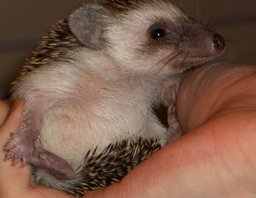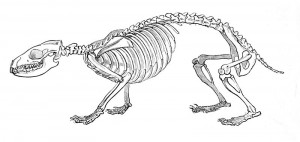Hedgehogs – A Brief Guide
This page is about hedgehogs in general, and not one particular hedgehog species.
 Any spiny mammal of the subfamily Erinaceinae and of the order Erinaceomorpha can be called a ‘hedgehog’. Altogether there are 17 recognized species of hedgehog, across five genera. These hedgehogs can be found in parts of Europe, Asia and Africa. They have also been introduced to New Zealand. In America there are no native living species, although there is fossiliszed evidence of at least four extinct species that were native to south America. There are also no native hedgehog species to Australia.
Any spiny mammal of the subfamily Erinaceinae and of the order Erinaceomorpha can be called a ‘hedgehog’. Altogether there are 17 recognized species of hedgehog, across five genera. These hedgehogs can be found in parts of Europe, Asia and Africa. They have also been introduced to New Zealand. In America there are no native living species, although there is fossiliszed evidence of at least four extinct species that were native to south America. There are also no native hedgehog species to Australia.
Shrews and hedgehogs share distant ancestors, some people say they can still spot similarities between the two different animals, especially when you look at a baby of each species.
Did you know that hedgehogs’ spines are actually hollow hairs? These haires have been made tougher and more rigid with Keratin. These hairs are commonly referred to as quils, yet hedgehog’s hairs are remarkably different to quils of a porquopine. The quils of a hedgehog can not easily be removed from its body and are not poisonous or barbed. A hedgehog commonly has 5,000 to 6,500 quils, although it depends on the species.
The spines of a hedgehog are primarily for defense. Upon detecting a predator these creatures roll up into a spereicle shape – this causes all the spines to point outwards so that there is no ‘safe’ surface to the hedgehog. This defense mechanism is usually a second option for hedgehogs, when they have located any danger they will usually flee and use the curling up as a back up.
Most hedgehog species are nocturnal, coming out in the night time, although some have been found to be active during day light.
What do hedgehogs eat? The diet of a hedgehog is usually made up of a range of insects, frogs, berries, carrion, bird eggs and snails. Of course different species will have different foods which they eat as it depends on where they live. The Afghan Hedgehog’s diet is primarily made up of berries.
In many gardens accross the world, hedgehogs are often encouraged as a natural form of pest control. This is beacuse one hedgehog alone is able to keep the average garden pest free (insect-wise) by eating around 200 insects a night.
Of course many people love to see these beautiful creatures too and so attract hedgehogs to their garden. This can be done by putting out clean water, chopped peanuts, peanut butter and cat food or dog food. You should never give a hedgehog milk as it is poisonous – especially to younger hogs.
Here is a great site all about Attracting Hedgehogs To Your Garden.
 However as more and more hedgehogs are attracted to town and city gardens it is inevitable that more hogs are going to be knocked down by traffic as they are crossing roads. This is believed to be one of the biggest causes of death among hedgehogs in towns.
However as more and more hedgehogs are attracted to town and city gardens it is inevitable that more hogs are going to be knocked down by traffic as they are crossing roads. This is believed to be one of the biggest causes of death among hedgehogs in towns.
The average litter size for a hedgehog often depends on the size of the species. Larger species generally have 3-4 per litter, whereas smaller species are likely to have 5-6.
Domesticated hedgehogs are a popular choice of pet for many people. My favourite species for pet hogs is the African Pygmy hedgehog. Recently hedgehogs have become even more popular as pets due to their easy temperament and the non expensive living conditions they need.
 June 27, 2011
·
June 27, 2011
·  Maddia (Admin) ·
Maddia (Admin) ·  Comments Closed
Comments Closed
 Tags: attracting hedgehogs to gardens, hedgehogs as pets · Posted in: Hedgehog Information, Hedgehog Species
Tags: attracting hedgehogs to gardens, hedgehogs as pets · Posted in: Hedgehog Information, Hedgehog Species


